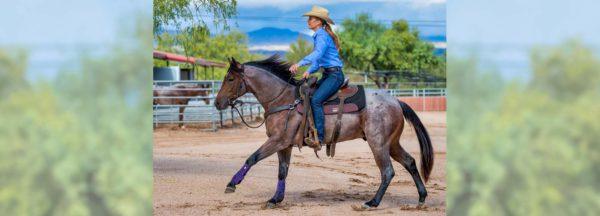Training Tip: What If You Don’t Have an Arena to Train Your Horse?

In a perfect world, we all have a facility that meets our requirements to train our horses year-round. Reality is far from perfect, though. I’ve been there myself, some of the situations and conditions I’ve had to train horses out of throughout my career were far from desirable, but I found a way to get the job done. I’m thankful for those experiences because they made me a better horseman and deepened my appreciation for the facilities I have today.
If you find yourself having to train your horse in less-than-ideal conditions, whether that’s at your own place or at a location you haul your horse to, here’s the good news – you can train your horse through the Method and do a great job. When I started out, all I had was a roundpen and miles of dirt roads to train my horses.
The best horsemen in the world don’t necessarily have the best training facilities; they just learn how to make the best of any situation. Ian Francis taught me early on that your imagination is your greatest asset as a horseman, and he’s absolutely right.
I hear three excuses from people about why they can’t follow the Method or aren’t making progress with their horses and how they can be overcome. The first two excuses – not having a roundpen and not having a big enough arena – were covered in previous weeks. Here is the third excuse and how to get over it.
#3 You don’t have an arena.
You do not need to have an arena of any sort to do the Method. I’m living proof of this myself. Now, I’m not going to say that having an arena doesn’t make your job easier, because there are times when it definitely comes in handy. This is especially true if you’re a beginner rider or if you lack a bit of confidence.
Arenas are controlled environments and limit the unexpected from occurring. And there are certain exercises in the Method, such as the Cruising Lesson, Follow the Fence, and Diagonals, in which having an arena makes your job easier. That doesn’t mean, though, that you can’t teach your horse the exercises without an arena. You just have to be creative.
For example, not having an arena usually comes up when people get to the Cruising Lesson in the Fundamentals Series. “I have nowhere to canter my horse, Clinton,” they’ll say to me. Here are a couple of ways to get around the issue. Use your pasture. Step off an area that’s 100 feet by 200 feet and mark the boundary with cones. As long as you only touch the reins when your horse crosses the imaginary arena fence line, you’ll still be able to accomplish the goal of the Cruising Lesson. If he crosses the line, steer him back into the “arena,” and then drop the reins.
Another option is to do what I did in Australia with my training horses. After the horse’s third ride, the training sessions took place out on dirt roads like I demonstrate in the Arizona Desert Adventure Series.
The Cloverleaf Exercise from the Intermediate Series is another exercise that people aren’t sure how to accomplish without an arena. All you need for this one is a 100-foot by 100-foot space marked out in a pasture or on your property. I recommend 100 feet because if you get too much smaller than that, it makes it more difficult for the horse to lope around. If you’ve got a naturally athletic horse, this isn’t a big deal, but if your horse isn’t as naturally gifted, he’ll struggle to stay going in a smaller area.
When you have a 100-foot by 100-foot space measured out, divide the area into four sections for the leaves of the pattern. To help stay on the pattern, you can mow 10-foot paths to mark the cloverleaf or kill the grass and drag the ground to create dirt paths. Or, you can even set out four cones in each corner of the 100-foot by 100-foot space and place one in the middle of the area to visualize the pattern. Again, you’re only limited by how creative you are with the resources you have available to you.
Have a horsemanship question or looking for more training tips? Check out the No Worries Club.
